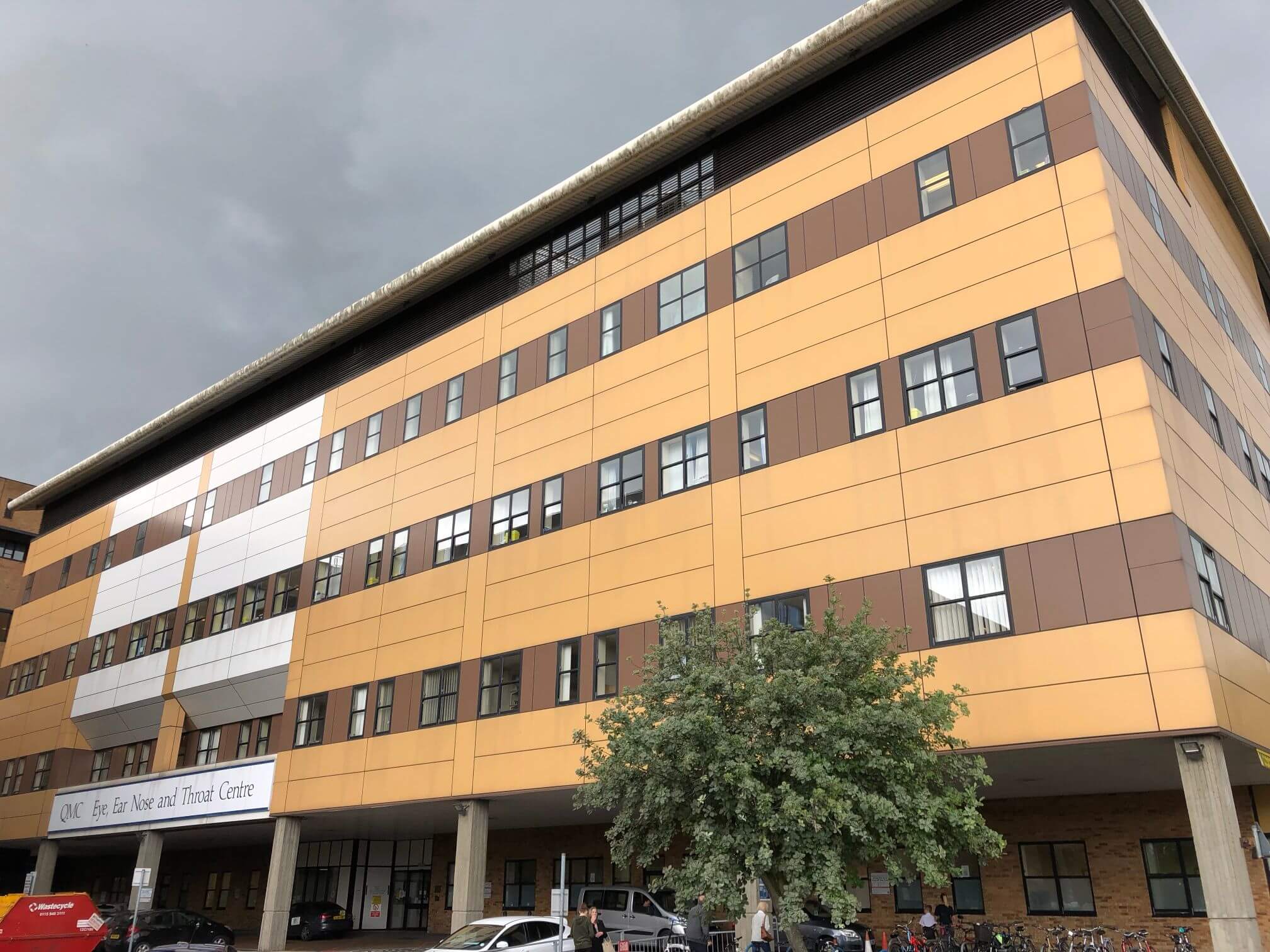

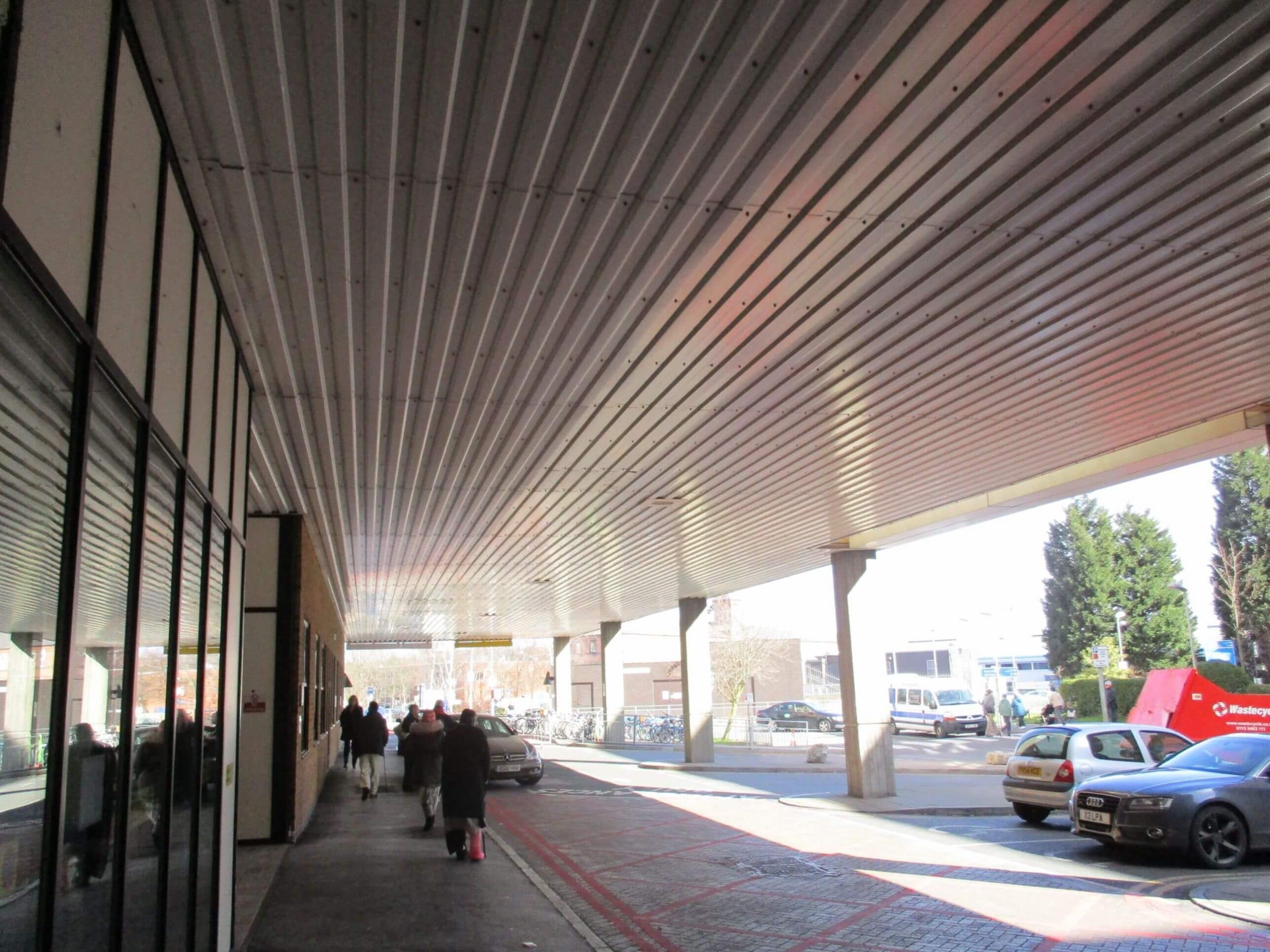
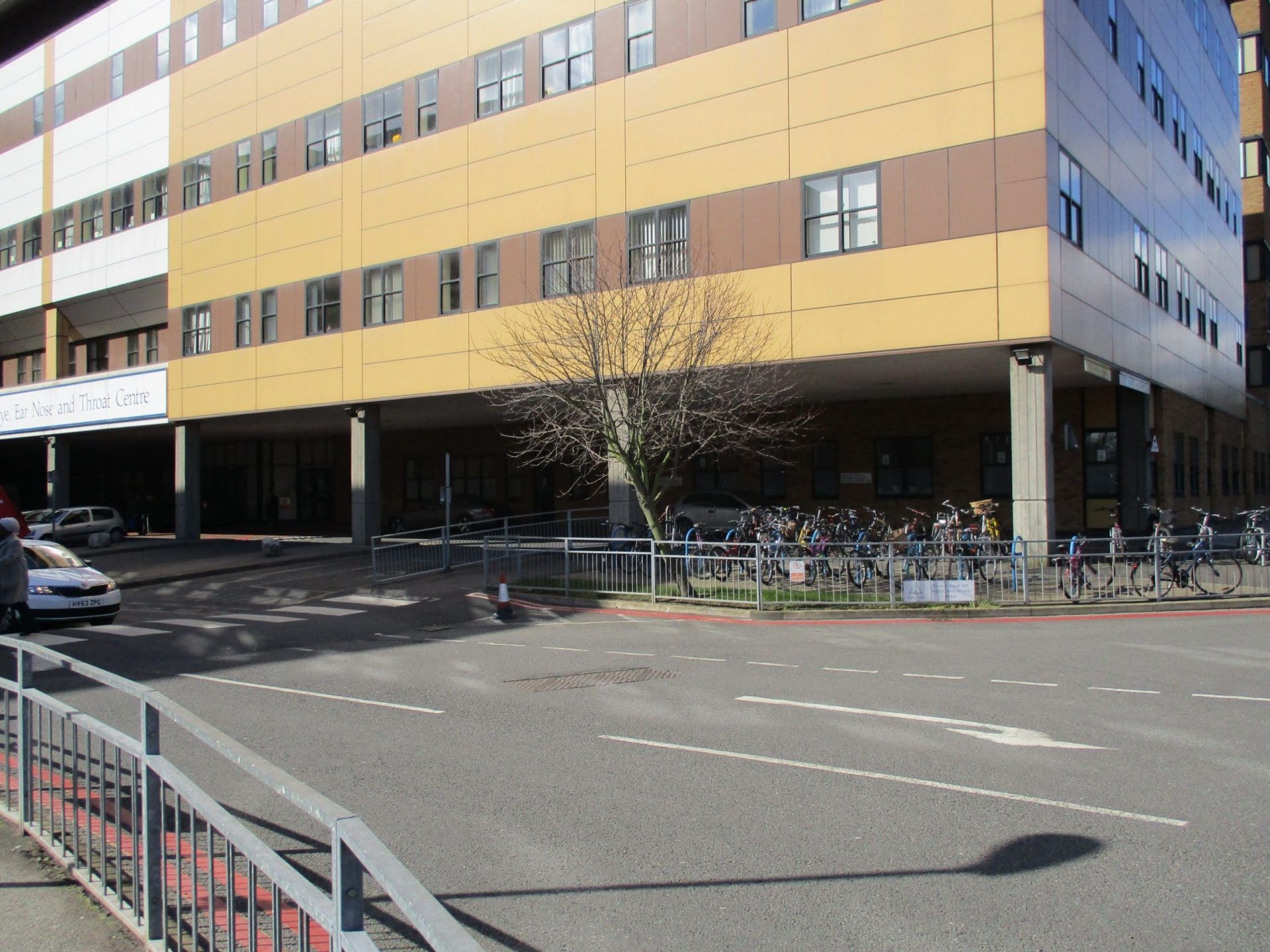
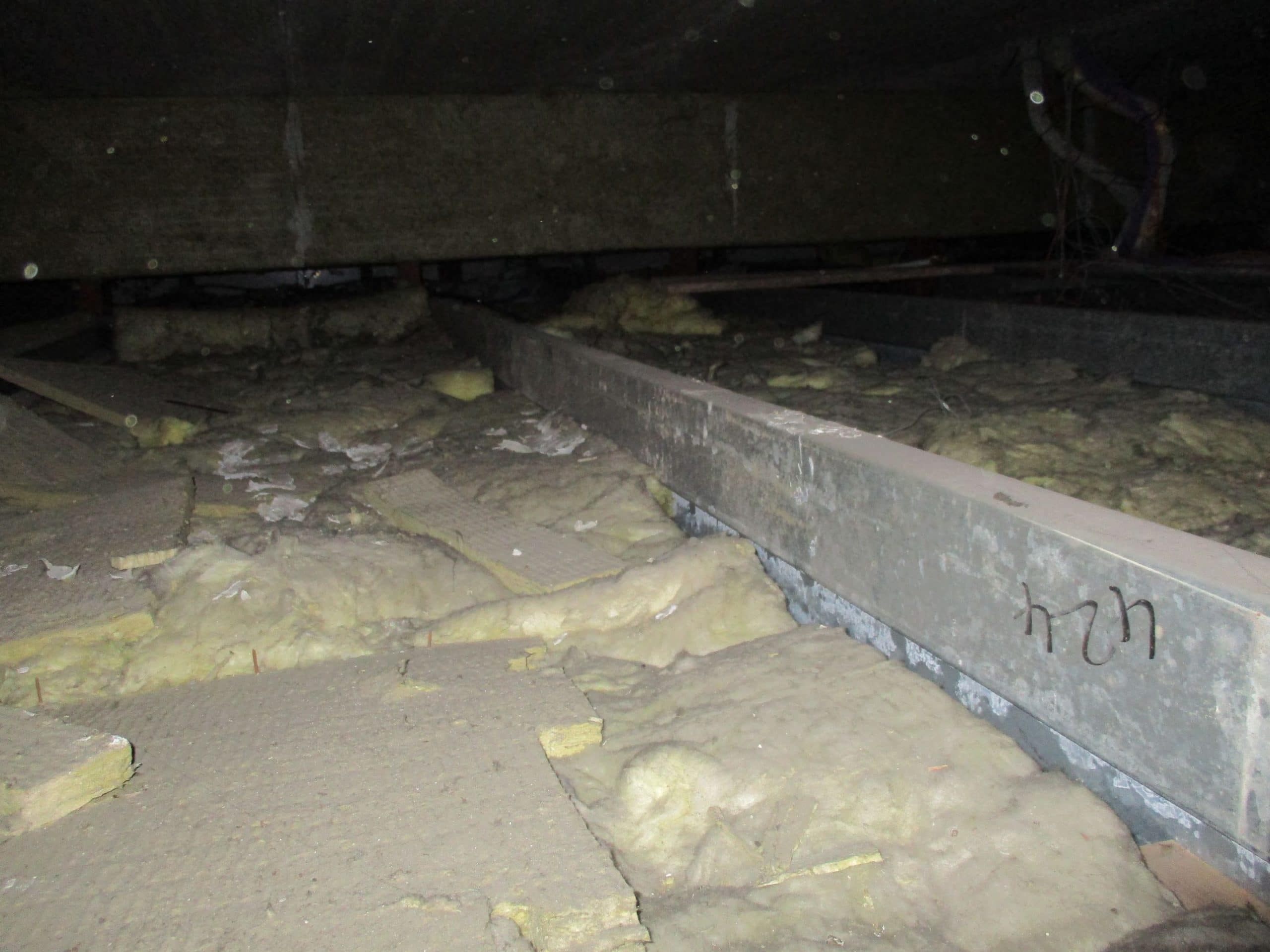
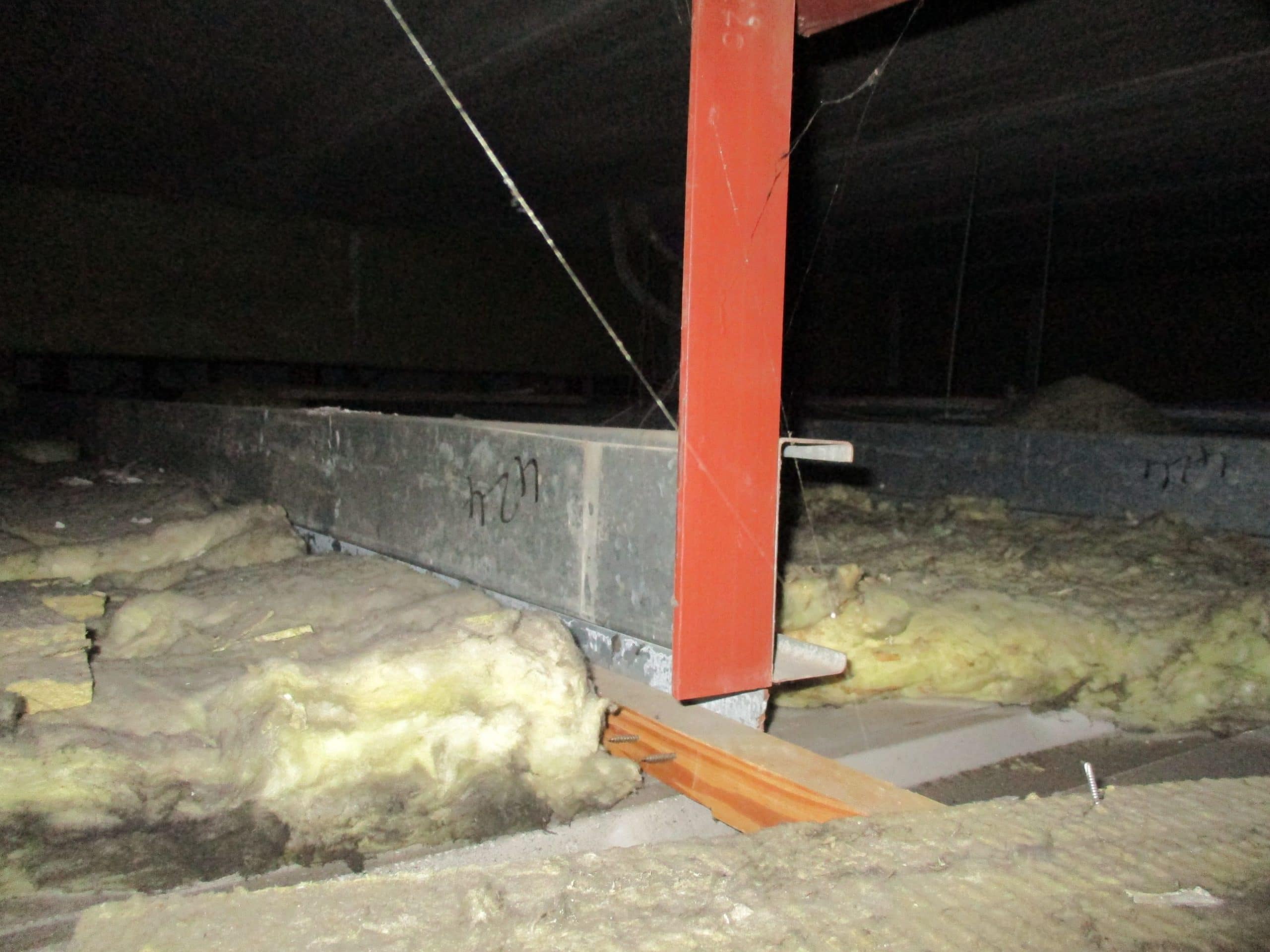

The offices positioned directly above the main entrance to the ENT department of the QMC hospital overhang the ambulance drop off point. This means the floor of these offices are exposed to the elements and were only protected by the steel cladding, a thin layer of insulation and the concrete bison beams.
Although not ideal, the temperatures in these offices were put up with for many years until February 2018 where exceptionally cold weather hit the country for many weeks.
The air temperature fell as low as 15°C, these low temperatures were exacerbated by the floor temperature falling well below that with loss of thermal comfort.
Concerns of working on a high rise building and recent news of working with flammable materials meant that we had to think of many solutions to improve the thermal integrity of the insulation within the canopy. Our solutions involved installing mineral fibre as a safe medium.
Access and health and safety were a high for the installation of additional insulation, the area was close to inpatient wards removing the possibility of night work, the entrance was used for ambulance access and is very busy during the day. The space between the cladding is limited and the cladding itself was not deemed to be weight bearing.
A structural survey of the area was completed and additional bracing installed to allow the boarding out of the individual section. The installation methods of mineral fibre boards were agreed and late in 2018 the work fix the mineral fibre boards to the concrete beams began.
Access was to be only during the daytime of the weekends and the individual section partitioned off, this kept disruption to a minimum level and the entrance was left accessible throughout the project.
After the first section was completed the temperatures in the offices were checked. The outside air temperatures had begun to fall and the outside air temperature on the Monday morning before the area was occupied was a frosty 0°C. The first section where the room temperatures were taken had not yet been insulated and the air temperature was 17°C, cold, but raising, the floor temperature was 13°C this would inevitably rise, but would be uncomfortable. The next reading was in the section insulated the day before, the air temperature was 19/20°C, but the floor temperature was 18°C, 5°C above that of the uninsulated area, as this area had only had 12 to 24 hours to show a temperature difference, this was a very marked change.
The project ran relatively smoothly for the next 8 weekends until complete, and although the work was very difficult and challenging there were no incidents, accidents or complaints.
“Thank you for your work, to date there have been no issues with low temperature.” – Regional Business Manager Andrew Bentley






We’ve had the opportunity to work on some inspiring projects with some fantastic residential clients, businesses and local authorities.